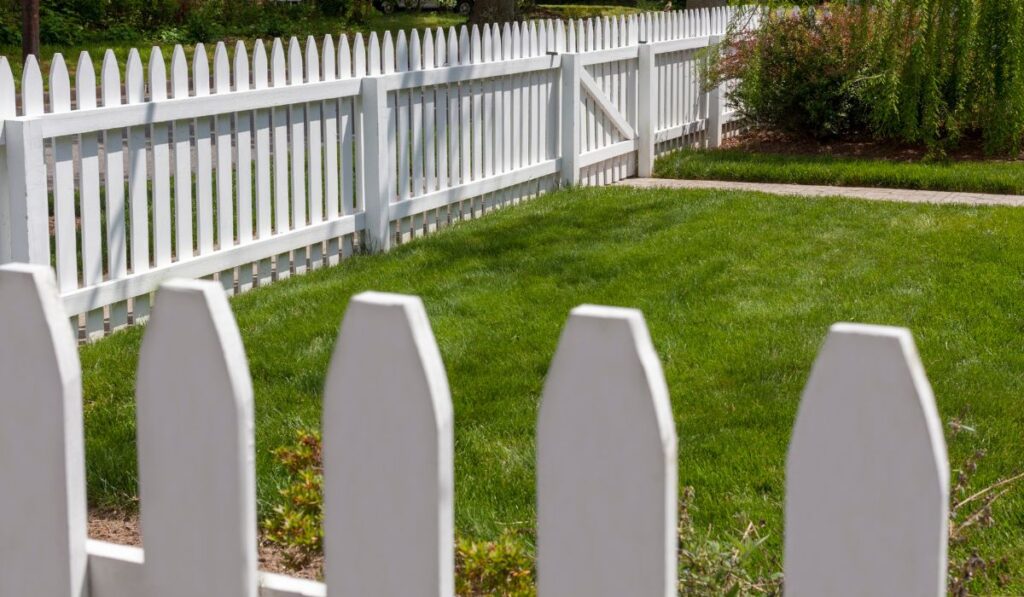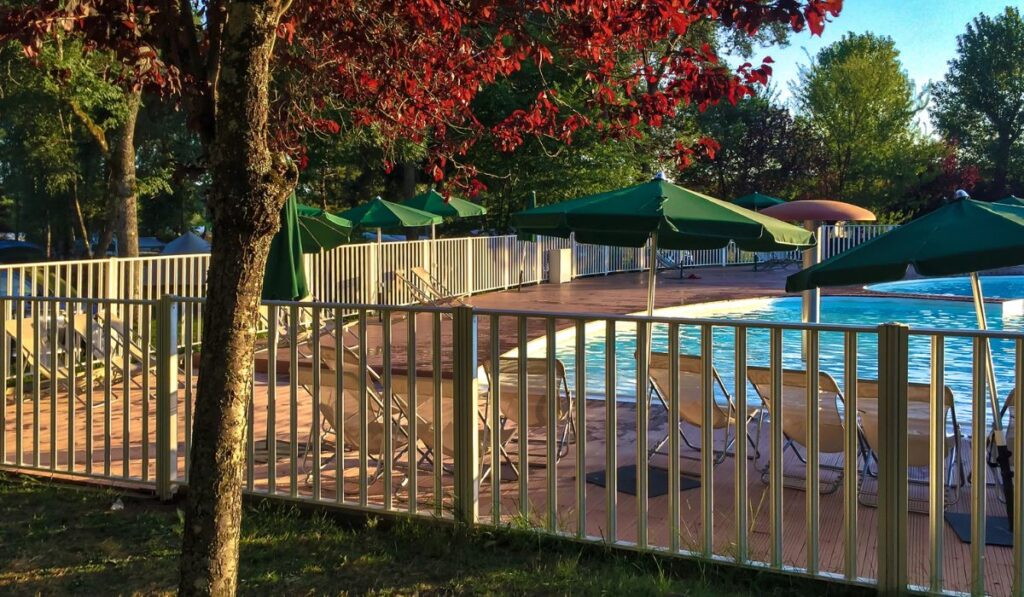Fences can serve all sorts of purposes. They can offer protection – from noise, nosy neighbors, traffic, and more. Fences can also create more usable space on your property if you have children or pets who need safe enclosures. You can add fencing to your front or backyard, each with its own impact. But what about aesthetics? A fence for landscaping can be an eye-catching feature of your property, boosting curb appeal and property value. You will need to consider the fence, its material, color, layout, and design. But you will also need to plan out the overall landscaping design of your yard to complement the fence and home. So if you are interested in adding fencing to enhance your property, read on for our tips and insider info!
Landscape design
One reason that you might consider adding fencing to your yard is to add to its aesthetic. You may not be entirely sure what you want the style of your property to be. But adding a fence for landscaping and some decorative plants can help you figure it out. Adding plants is also a great way to make a new fence fit in with the rest of your landscaping. Rather than the new fence looking like an afterthought, you can add elements to tie everything together.
Regardless of the type of fence you install, natural elements around it can soften the effect or even camouflage it. For example, you may opt for a chain-link fence for practical purposes. By camouflaging it with climbing plants or tall shrubs you can make it much more visually pleasing.
There are two main approaches to landscaping around your new fence. One is to enhance the look of your fence. For example, if you install a beautiful wood fence, or perhaps a striking wrought iron fence. In this case, you will add plants and flowers that will draw attention to the fence and boost its appeal. The other approach is to hide or block a fence as much as possible. This may be because you opted for a less expensive and less attractive fencing choice, such as a chain-link fence, or because you are trying to increase privacy and security. In this case, you will focus on heartier, larger plants to cover the fence.
Landscaping around a fence
When you decide to landscape around your fence, there are a few different aspects you should consider. As you choose plants, shrubs, and flowers to surround your fence with, consider their sunlight requirements. How much sun or shade that area gets will impact what types of plants will thrive there. Make sure to group any plants that need full sun together in a place with either western or southern exposure. For shade plants, put them in a bed with eastern or northern exposure. To make maintaining your plants simpler, make sure to group plants together by how much water they will need. If you don’t want to spend a ton of time maintaining your landscaping choices, opt for shrubs or other perennials. This way you won’t be constantly planting and pruning, but rather enjoying your beautifully landscaped yard!
Next, consider the type of fence you are installing. If you plan to add a wooden fence, remember that it will need to be painted or stained regularly. That means you will need to allow extra space to get to it when maintenance time comes. And as a general rule, you should space any plants and shrubs slightly away from the fence if it’s wood. This will leave room for maintenance and avoid damaging the fence with excess moisture.
For an optimal visual effect, try loosely layering your flower beds and plants. A popular style is to have three rows of short plants in front. Then layer medium-sized ones in the middle, and plant the tallest ones in the back. You can plant flowers, plants, or shrubs along the fence in a straight line for simplicity. You can also soften the lines by creating a curving bed to plant the greenery and flowers. This is a nice choice if you have a long wall of fencing that needs to be broken up visually. You can also include climbing plants, flower boxes, or ivy to cover the actual fence, too.
Privacy fence for landscaping
If you’ve decided the right fence for your landscape is a privacy fence, there are plants to enhance this style. Whether you’re looking to cover up the fence for aesthetic purposes or to give your home a more secluded feel, there are tons of options. Landscaping with these plants will add beauty and privacy to your home’s overall look.
Arborvitae is a popular plant for a living privacy fence and does a nice job shielding an actual fence, too. Its thick evergreen foliage creates a dense hedge when the trees are spaced properly. Arborvitae tolerates most soil conditions and is low maintenance. There are several varieties of different stature, from dwarf to giant. Make your selection based on how high your fence is and how much you want to cover.
Bamboo is one of the fastest-growing plants in the world, so it can create a lush privacy screen very quickly. Some varieties of bamboo are invasive, so consider planting it in large raised planters to keep it under control. Skip laurel can also create a beautiful green privacy screen. As a bonus, when planted in a sunny location, a laurel hedge will reward you with white blossoms in spring.
Fast-growing privet is another great choice for privacy. With proper care, it can add between two to three feet to its height each year. When grown as a hedge, privet needs to be pruned regularly. The payoff is a thick cover of sweet-smelling flowers each spring.
You may think of holly as a Christmas plant, but there are many varieties that provide excellent privacy! Holly can come as tall trees or dense shrubs, in colors from green to variegated. Boxwood is another option that has been long used as a decorative pruned hedge in formal gardens. But if constant maintenance isn’t for you, it is also beautiful when less strictly maintained. Allowed to grow freely, some varieties can reach as high as 20 feet tall. Though people tend to think of boxwood as a deep green plant, there are also beautiful white and gold varieties.
Front landscaping versus backyard fencing
Front yard landscaping and backyard landscaping have some differences. The best fence for landscaping your front yard is one that ties more specifically to the aesthetic of your home and neighborhood. Because it will be visible to everyone on the street, consider these tips when adding a front yard fence. Backyard fences will typically add value to a home, even if they are not made of the most expensive materials. However, since front yard fences are a little less common and impact curb appeal, those require more careful planning and consideration.
In your backyard, you may opt for a more durable fence, such as a PVC/vinyl fence. These will stand up well to all weather conditions, plants, and use.
Getting started on a fence for landscaping
No matter what style of fence you plan to add, landscaping it intentionally will enhance its beauty. If you have questions about the best fence for landscaping your property, contact the professionals at Bravo Fence Company today! We will be happy to work with you to find the perfect fencing fit for your home.






